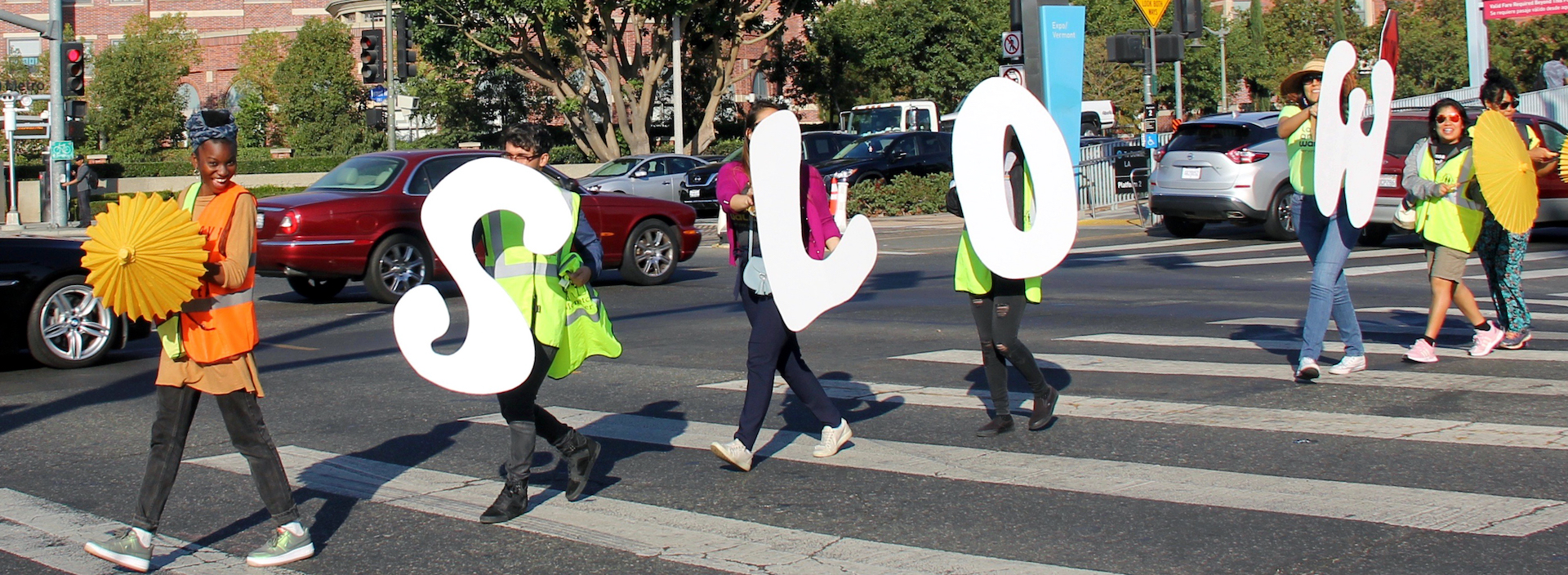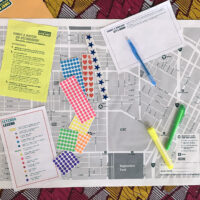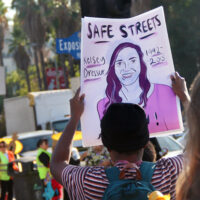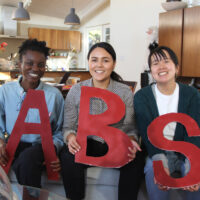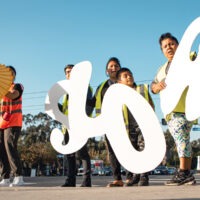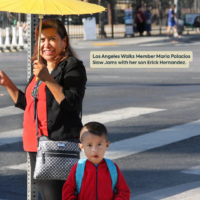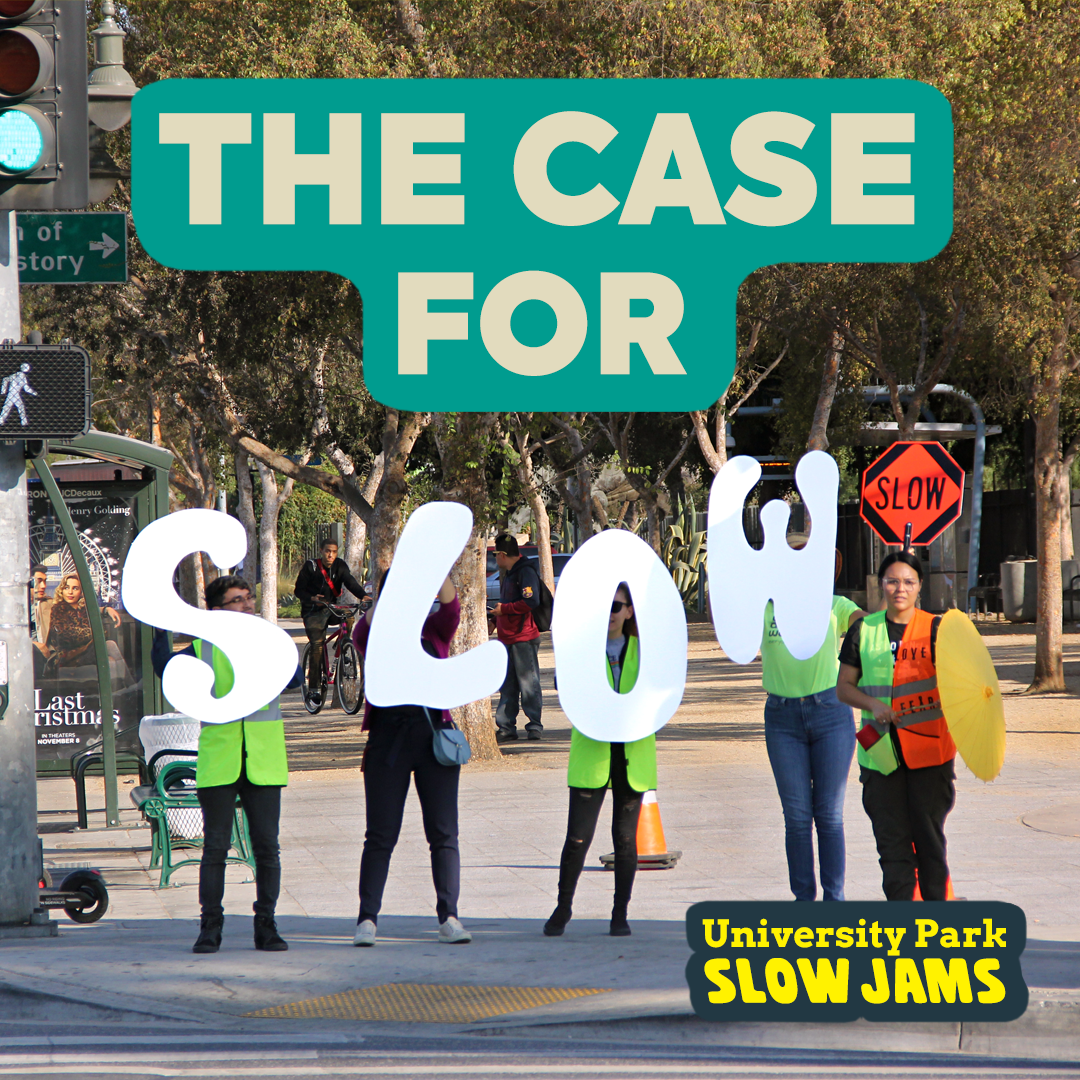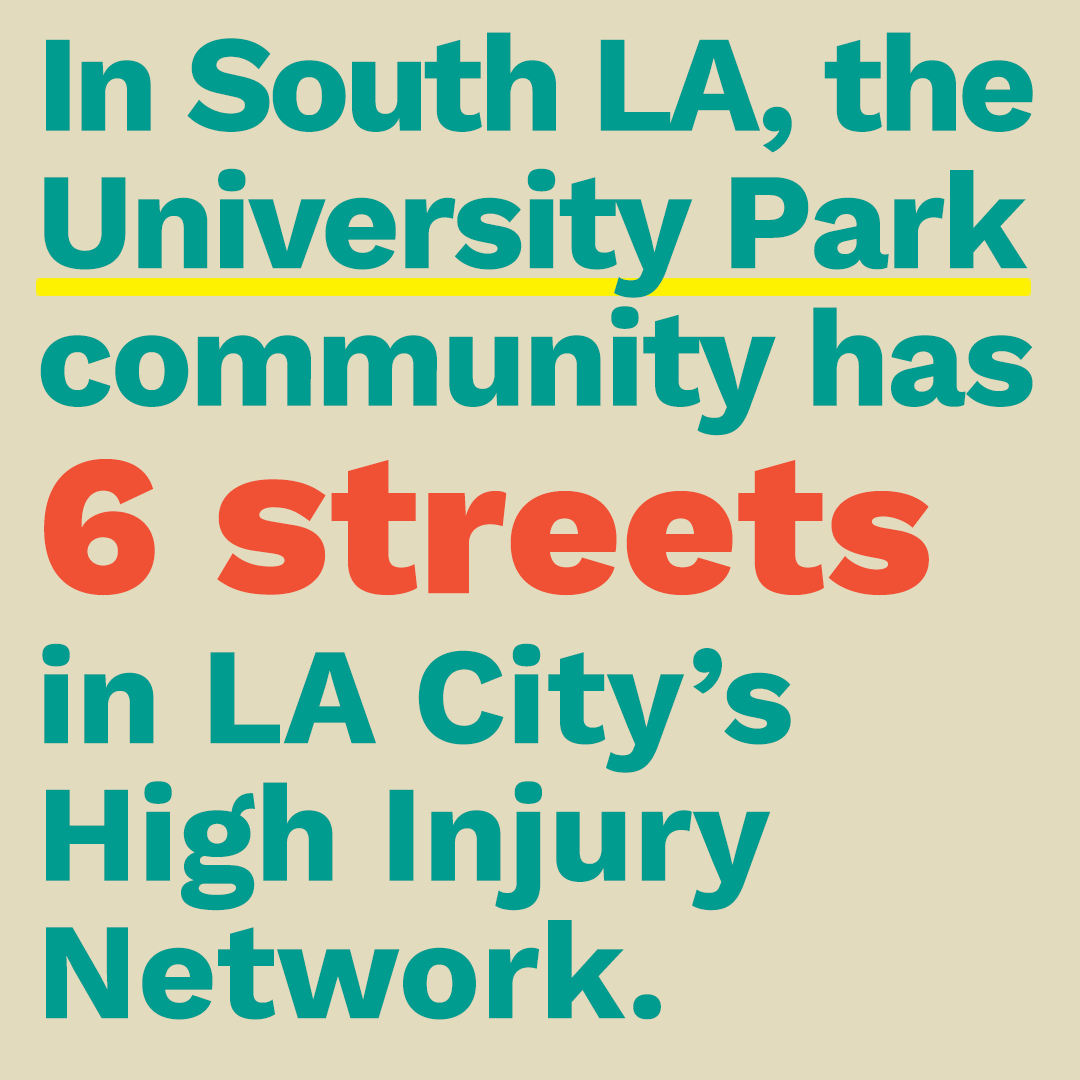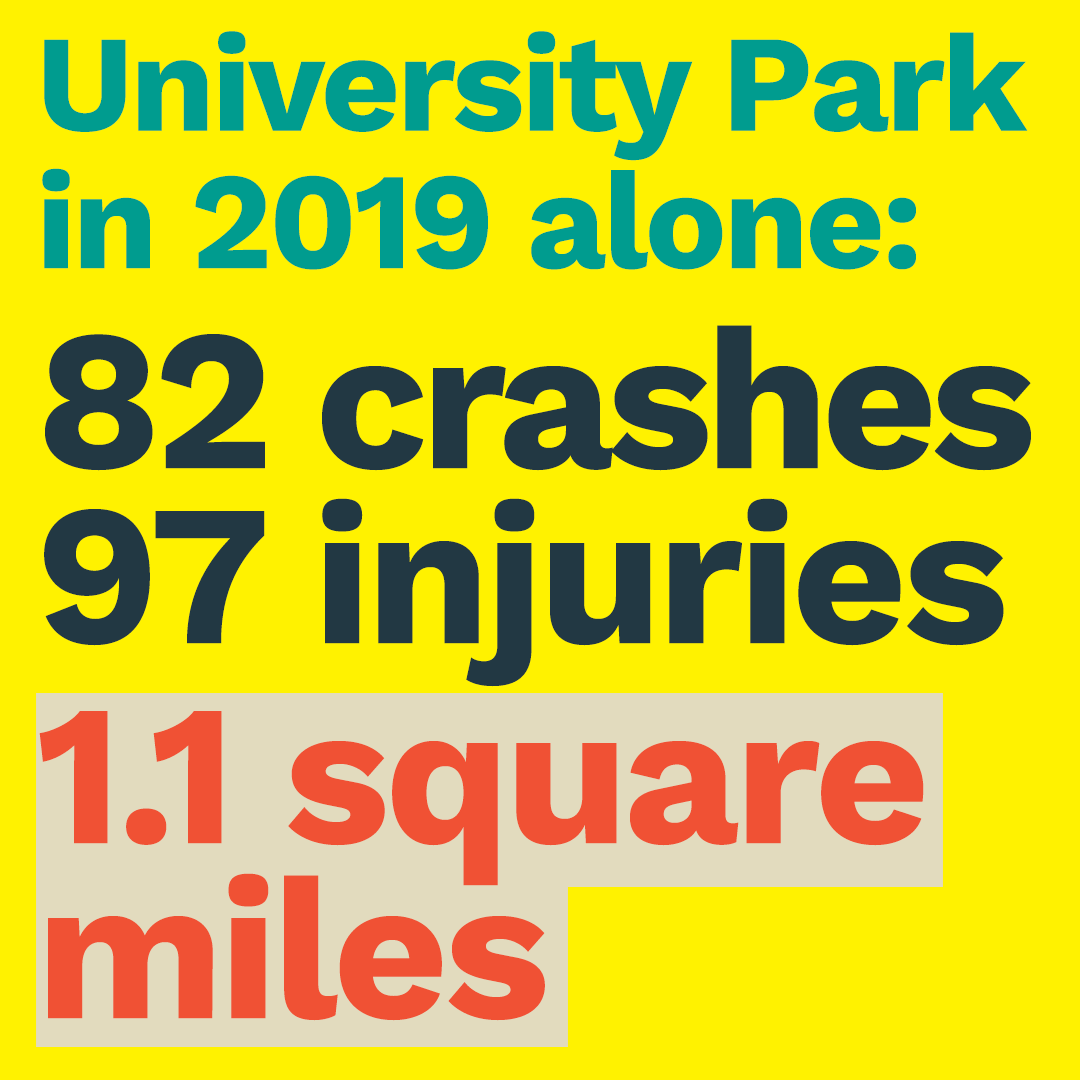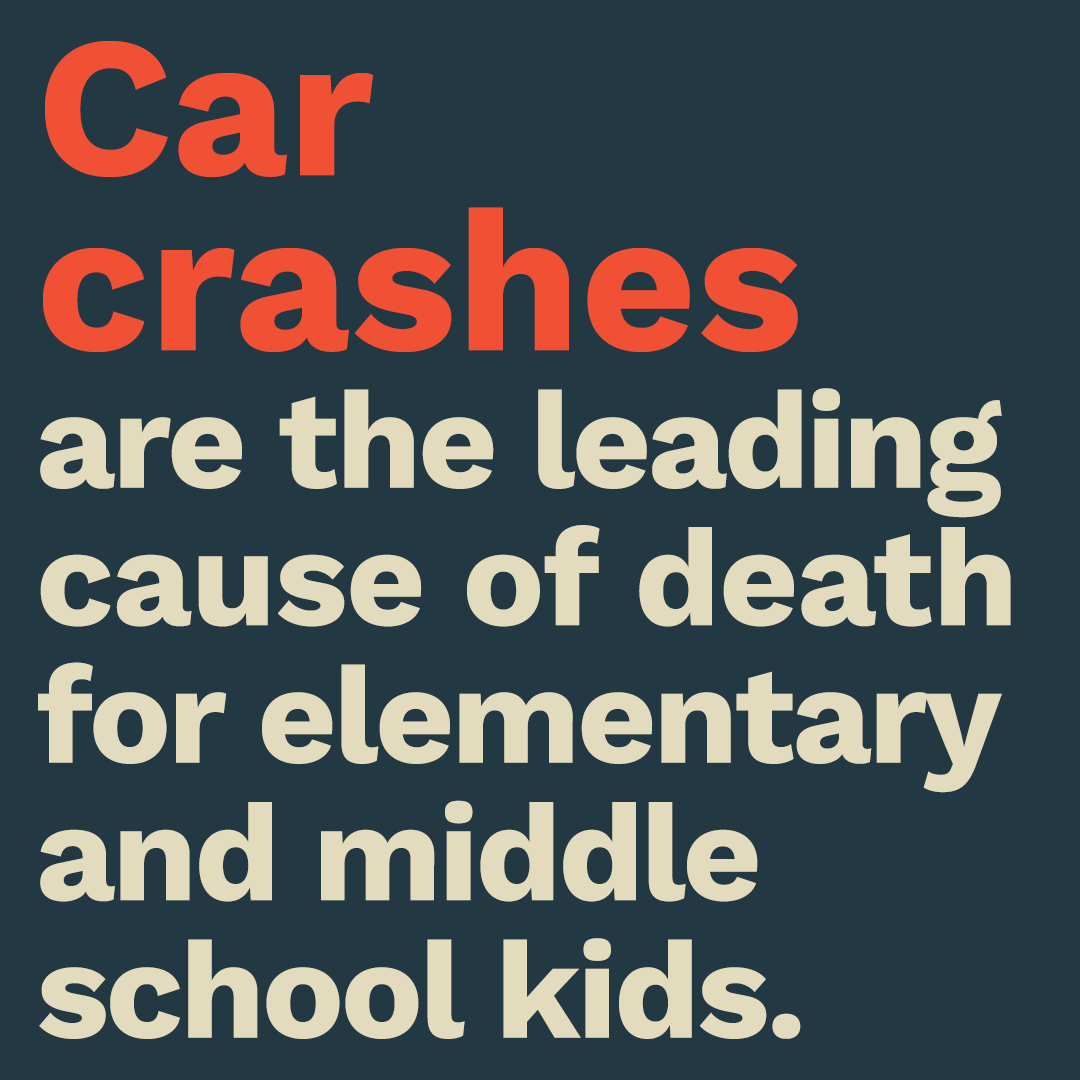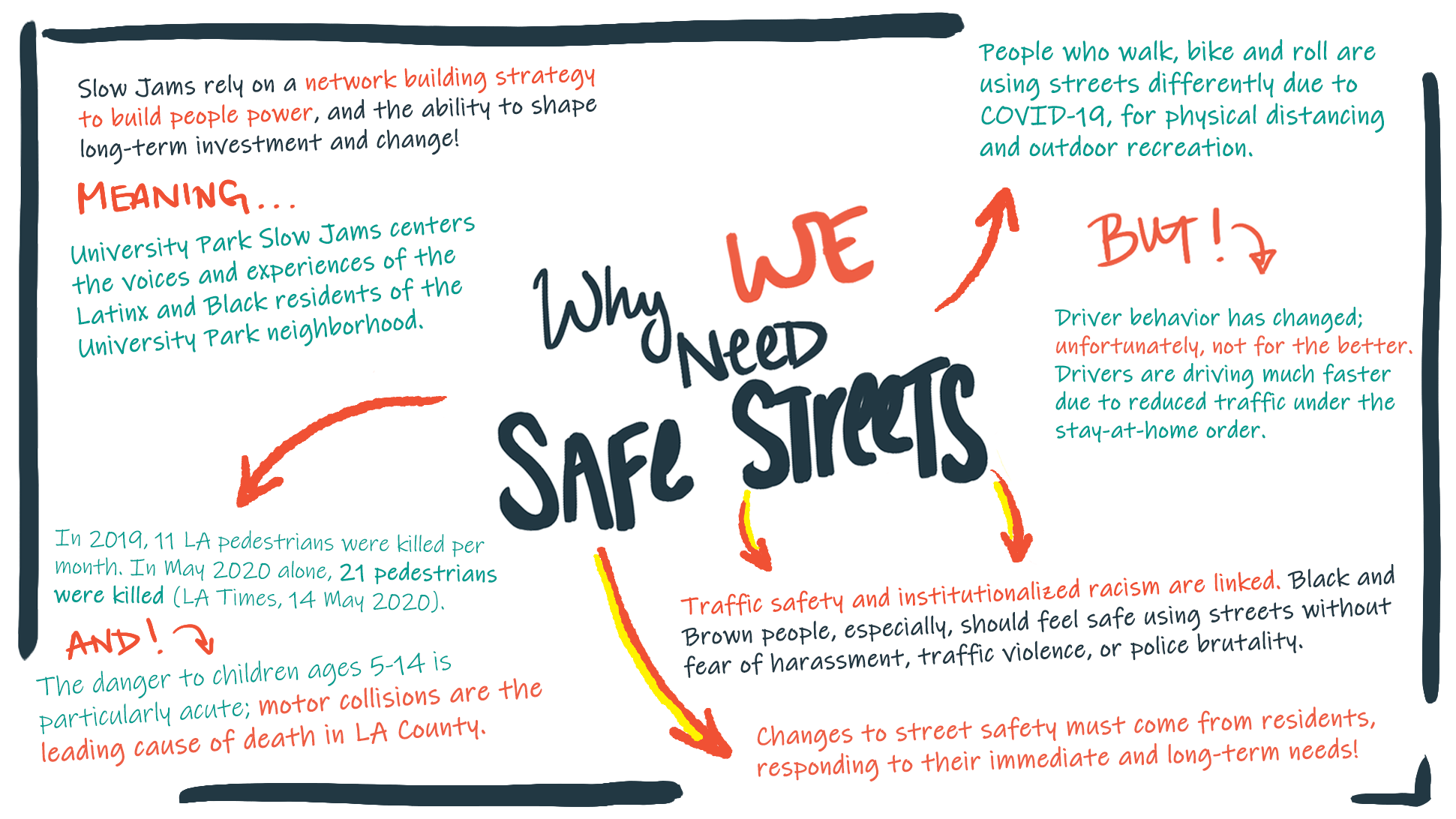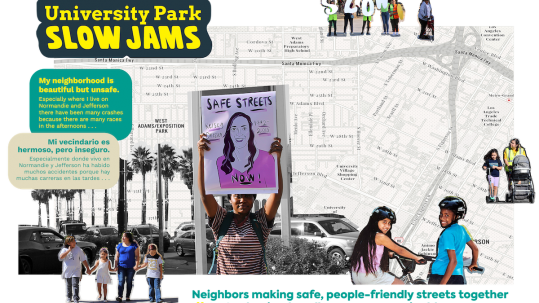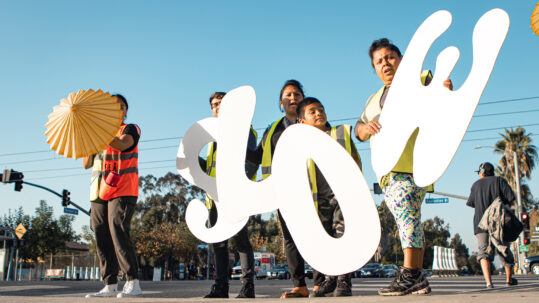In fall of 2019, Professor Sloane taught a class at USC Price, “Creating a Pedestrian Friendly City,” in which students examined safety and crash data, and learned policy and planning interventions. Through the class, Public Matters, Prof. Sloane and students took to the streets for a pilot Slow Jam at the High Injury Network intersection at Vermont and Expo. To connect the effort beyond campus, the groups tapped partners LA Walks and USC Kid Watch. The result: neighborhood residents and an initial cohort of parents in the Kid Watch network actively took to the streets for this upstart creative act.
Initial excitement, brought to life through dynamic crosswalk choreography, motivated the partners to: identify funding opportunities; support the growing interest of local parents; and design and distribute a documentary-style campaign that could bring attention to local issues by sharing information about traffic safety experiences in the neighborhood. This campaign, visible on Public Matters’ instagram, was shared among the partners’ digital networks, building further excitement and energy among our groups, our networks, and an emerging group of funders.
Parents shared their desire for deeper action, and we transitioned at the end of summer and early fall to workshops where they, along with organizational partners and a small cohort of USC student interns, could impart their history within the neighborhood and explore the issues that matter to them most. Through a series of conversations with more than 40 families who attend five public schools in the area, it became clear that traffic violence has been normalized. One community member referred to it as a collective “quiet struggle.” Through dialogue and mapping activities, a portrait of the places people love, and the places people have experienced traffic violence, came into focus.
Some parents got angry. Some expressed the need to organize and mobilize. Folks got fired up. They recognized, as one contributor, Lilia Garcia, did, “the power multiple voices have when it comes to making change.”
With the information gathered from these sessions, we are working with USC undergraduate and graduate interns to develop an aggregated and evolving University Park Slow Jam Story Map, a conduit for the community’s voice that will grow over time.
As we deepen our work, the focus remains on using socially-engaged art practices to support community members to take direct, immediate action, all while working towards the long-term goal of infrastructure change.

